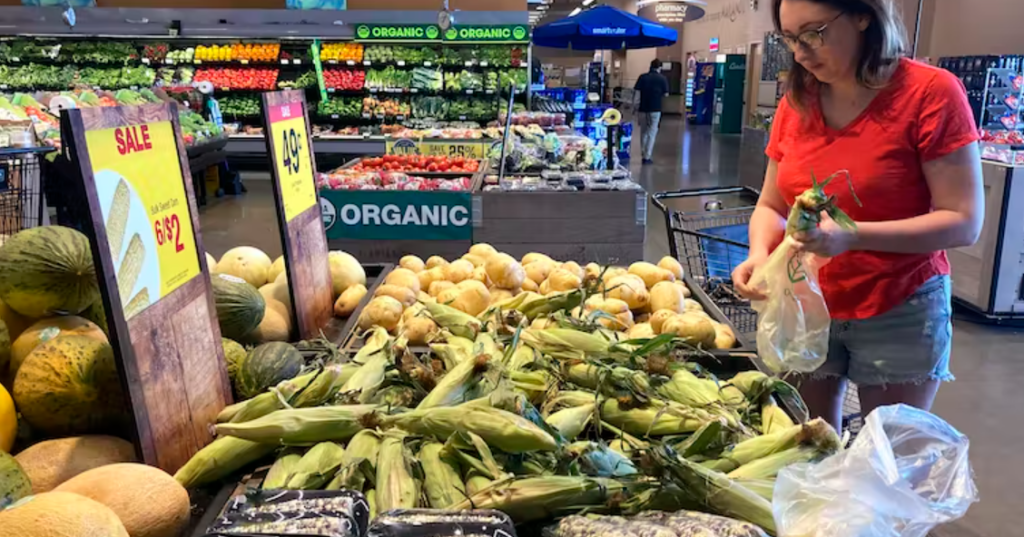Jennifer Solis Nevada Current
According to a report on federal nutrition programs, government spending on food assistance programs has decreased since the pandemic, but participation in these programs has only increased, leaving more Americans than ever without access to the food they need.
Last week, the U.S. Department of Agriculture’s Economic Research Service released its annual report examining participation trends and spending in the department’s largest domestic food and nutrition assistance program.
The USDA is spending about $166 billion on food and nutrition assistance programs in 2023, a 13% decrease in spending compared to the previous year, according to the annual Food and Nutrition Assistance Status Report.
The decline in federal spending was primarily due to cuts to the Supplemental Nutrition Assistance Program, known as SNAP, and other child nutrition programs, according to the report.
Anyone else reading this…
Federal spending on SNAP in 2023 is down about 6% compared to the previous year, even as participation in the program increased by about 2% nationwide. About 13% of U.S. residents participate in SNAP in an average month, the highest participation rate since 2017.
In Nevada, SNAP participation increased by about 9% from 2022 to 2023, according to data tracked by the Nevada Department of Human Services and Supportive Services.
As of March, SNAP participation in Nevada was up about 3% compared to the same period last year.
The increase in participation could be linked to inflation, according to the report. The consumer price index for food, a metric used to measure inflation, rose about 6% in 2023. That’s lower than 2022’s food inflation rate of about 11% but higher than 2021’s inflation rate of about 4%.
Despite increases in SNAP participation and inflation, the federal government cut the high SNAP emergency benefits provided during the pandemic in 2023. On average, SNAP benefits have fallen about 8% per household since the pandemic era, according to the report.
In Nevada, a family of four receiving emergency SNAP benefits saw their benefits cut by an average of about 35%, or $334, in 2023 compared to 2022, according to the Nevada Department of Public Health and Behavioral Health.
The Pandemic Electronic Benefit Transfer (P-EBT) program, which reimburses eligible households for the cost of school meals missed due to COVID-19-related school closures, has also been eliminated through September 2023.
Exemptions allowing schools to provide free breakfast and lunch to all students through the National School Lunch Program and the School Breakfast Program will also be eliminated by fall 2022, leading to a roughly 23% cut in federal spending on both programs in 2023.
Just eight states chose to continue their free school lunch programs. Nevada’s Republican governor, Joe Lombard, vetoed a 2023 bill that would have provided free school lunches to all elementary, middle and high school students in the state.
As a result, lunches served to low-income students in 2023 were about 7% lower than the year before the waiver was granted. Additionally, the report found that breakfasts served to food-insecure students were about 9% lower than when the school had been granted the waiver.
Data collected by the U.S. Census Bureau found an increase in the percentage of households with school-age children who report that paying for school meals has made it difficult to pay other expenses after pandemic waivers that allowed schools to provide free school meals to all students expire in 2022.
One major food and nutrition program in the United States has maintained funding during the pandemic: the Special Supplemental Nutrition Program for Women, Infants, and Children (WIC).
In 2023, Congress extended the increased monthly cash value vouchers mothers can receive for fruit and vegetable purchases in the program. It also marked the first time since 2009 that the number of infants participating in WIC increased, and the third consecutive year that child participation increased.
This was a much-needed increase for mothers and young children, according to the report. Data showed that the average cost of food per person under WIC in 2023 will be $55.95 per month, the highest amount since 2013 when adjusted for inflation.
Overall, the federal government spent about 15 percent more on WIC than the previous year, reflecting increased participation and higher food costs.
Be the first to know
Get local news delivered to your inbox!


